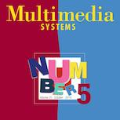Multiple sclerosis (MS) is a chronic inflammatory and degenerative disease of the central nervous system, characterized by the appearance of focal lesions in the white and gray matter that topographically correlate with an individual patient's neurological symptoms and signs. Magnetic resonance imaging (MRI) provides detailed in-vivo structural information, permitting the quantification and categorization of MS lesions that critically inform disease management. Traditionally, MS lesions have been manually annotated on 2D MRI slices, a process that is inefficient and prone to inter-/intra-observer errors. Recently, automated statistical imaging analysis techniques have been proposed to detect and segment MS lesions based on MRI voxel intensity. However, their effectiveness is limited by the heterogeneity of both MRI data acquisition techniques and the appearance of MS lesions. By learning complex lesion representations directly from images, deep learning techniques have achieved remarkable breakthroughs in the MS lesion segmentation task. Here, we provide a comprehensive review of state-of-the-art automatic statistical and deep-learning MS segmentation methods and discuss current and future clinical applications. Further, we review technical strategies, such as domain adaptation, to enhance MS lesion segmentation in real-world clinical settings.
翻译:磁共振成像(MRI)提供了详细的全方位结构信息,允许对关键疾病管理的MS损伤进行量化和分类。传统上,MS损伤在2D MRI切片上手工加注,这个过程效率低下,容易发生间/间观测差错。最近,提出了自动统计成像分析技术,以检测和分解基于MRI voxel强度的MS损伤。然而,由于磁共振成像(MRI)数据采集技术和MS损伤外观的异质性,其效果受到限制。通过直接从图像中了解复杂的损害表现,深层学习技术在MS les 分解任务中取得了显著突破。在这里,我们全面审查了目前和将来的MS 自动自动分解方法,并讨论了当前和未来的临床应用。我们进一步审查了技术分解技术战略,例如改进了目前和将来的MS 。




